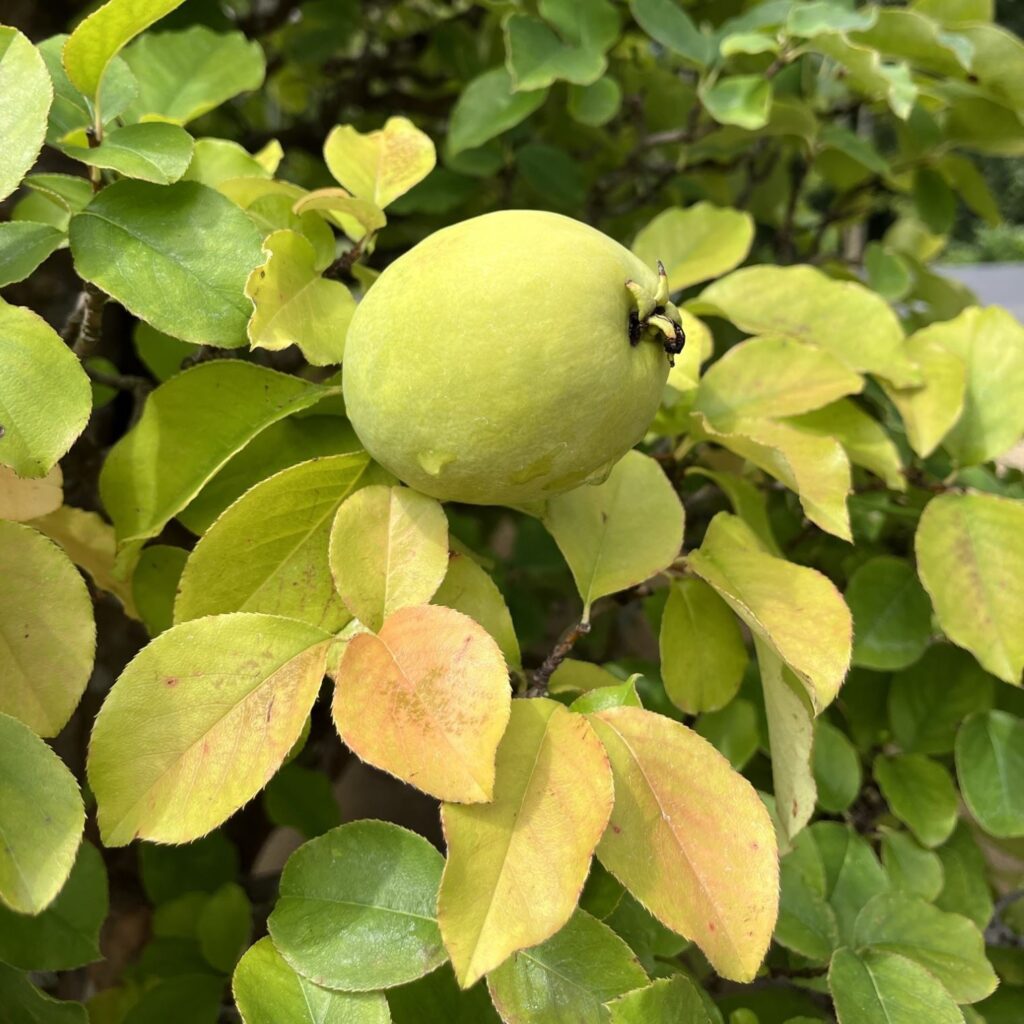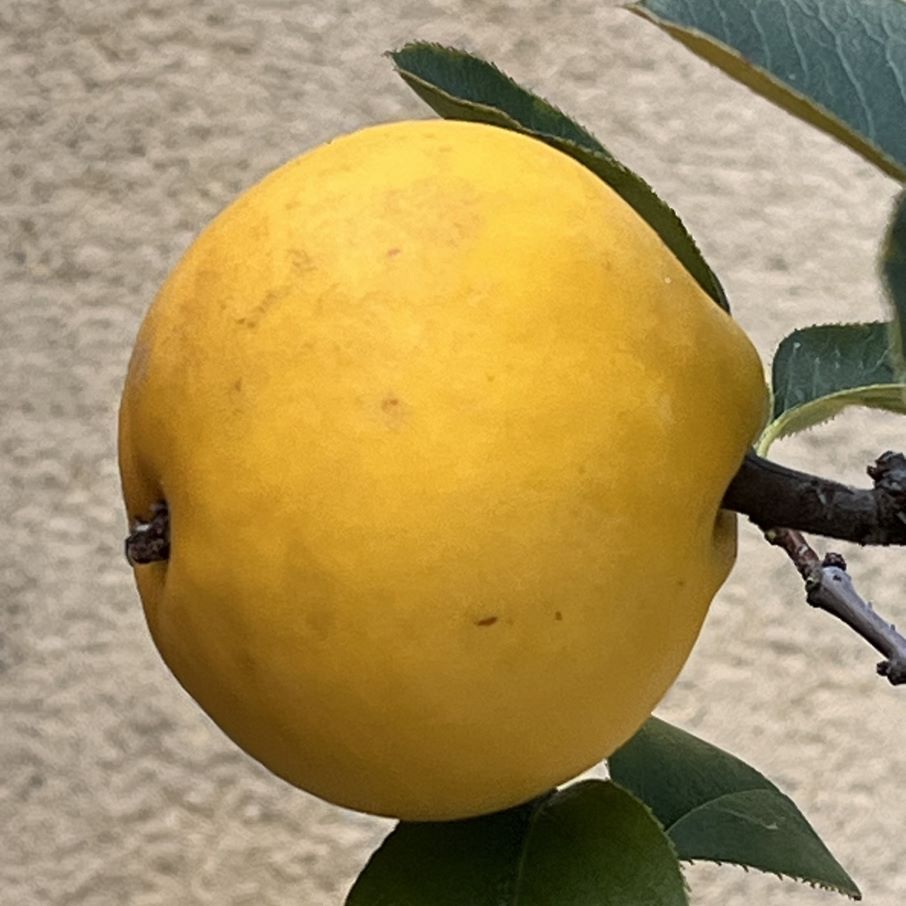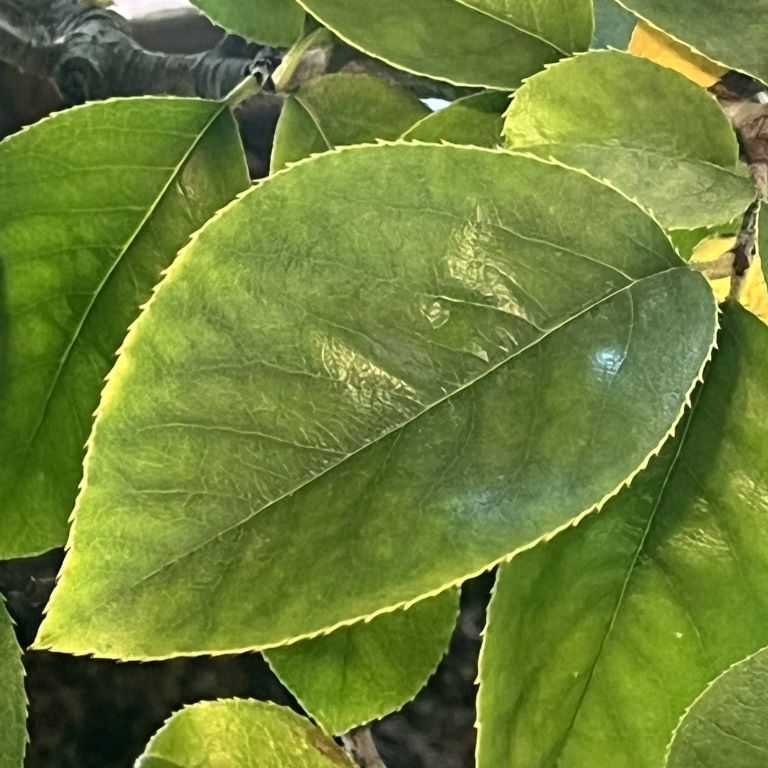カリンの花は花弁5枚の雌雄異花です。春は桃色の花、夏は緑色の葉、秋は赤色の葉、冬は黄色の実。凹凸のある実が熟して芳香を放ちます。
Chinese Quince flowers are dioecious with five petals. Its attractive features are its pink flowers in spring, green leaves in summer, red leaves in autumn, and yellow fruits in winter. The uneven surface fruits ripen and give off a fragrant aroma.
【仮名】カリン, アンランジュ
【和名】花梨, 安蘭樹
【英名】Chinese Quince
【学名】Pseudocydonia sinensis
【誕生】11/ 01, 11/ 21
【開花】03, 04, 05月
【花色】White, Pink
カリン
カリンの概要

カリンはバラ科の落葉高木です。原産地は中国東部で、日本へは遅くとも江戸時代初期に渡来。本州、四国、九州に植栽が広がりました。春は桃色の花、夏は緑色の葉、秋は赤色の葉、冬は黄色の実。裏庭に樫、表庭に花梨を植え、「金は貸しても金借りん」で商売繁盛を願いました。
カリンの名前

カリンの和名の由来は、材の木目がマメ科の「印度紫檀」に似ていて、その別名が「花梨」「花林」「花櫚」だから。英名チャイニーズクインスは「中国のマルメロ」という意味です。ラテン語の属名シュードシドニアは「偽のマルメロ」、種小名シネンシスは「中国の」という意味。
カリンの姿形

カリンは幹が直立。樹皮が鱗状に剥がれ落ちて斑模様になります。葉は先の尖った卵形で、表面に光沢、縁に鋸歯があり、互生。花は花弁5枚の雌雄異花です。雄花は雄しべが20本だけ、両性花はさらに雌しべが5裂。花後は凹凸のある梨状果を肥らせ、黄色に熟して芳香を放ちます。
カリンの利用

カリンの実は芳香があるものの固く、酸味や渋味も強いので生食に不向き。そのため、蜂蜜漬け、ジャム、果実酒などに加工されます。一方、リンゴ酸やクエン酸などに富み、日本では「木瓜」、中国では「榠櫨」という生薬に。煎じて咳止め、整腸、利尿、鎮痛などに用いられます。
カリンの空似

カリンに似ている「マルメロ」はバラ科の落葉高木で、原産地が中央アジア。「西洋花梨」とも呼ばれ、同じように果実が黄色に熟し、芳香を放ち、砂糖漬けや果実酒に加工されます。一方、樹皮は斑模様のない灰褐色で、葉縁は滑らか。果実は表面が灰白色の軟毛で覆われています。
Chinese Quince

Chinese Quince is a deciduous tree in the Rosaceae family. It is native to eastern China and was introduced to Japan at the latest in the early Edo period. It was planted in Honshu, Shikoku, and Kyushu. Its attractive features are its pink flowers in spring, green leaves in summer, red leaves in autumn, and yellow fruits in winter. People planted Oak in the backyard and Chinese Quince in the front yard to pray for prosperity in business.
The Japanese name of Chinese Quince comes from another name for “Pterocarpus indicus” in the Fabaceae family, because the grain of the wood is similar. The Latin genus name Pseudocydonia means “false quince” and the specific name sinensis means “Chinese”.
Chinese Quince has an upright trunk. The bark peels off in scales, creating a mottled pattern. The leaves are egg-shaped with pointed tips, shiny on the surface, with sawtooth edges, and alternate. The flowers are dioecious with five petals. Male flowers have only 20 stamens, while bisexual flowers have five-lobed pistils. After flowering, the pear-shaped fruit with an uneven surface becomes swollen, ripens to a yellow color, and gives off a fragrant scent.
Chinese Quince has a fragrant but hard fruit, and is not suitable for eating raw because it is sour and astringent. For this reason, it is processed into honey, jam, fruit wine, etc. On the other hand, it is rich in malic acid and citric acid, and is used as a herbal medicine in both Japan and China. It is used as a decoction to suppress coughs, regulate the intestines, relieve diuresis, and relieve pain.
“Quince”, which resembles Chinese Quince, is a deciduous tree of the Rosaceae family, native to Central Asia. It is also called “Western Quince” in Japanese, and its fruits ripen yellow, give off a similar fragrance, and are processed into candied fruit and fruit wine. On the other hand, the bark is gray-brown without any mottling, and the leaf edges are smooth. The surface of the fruit is covered with gray-white soft hairs.


